The 2012 MacBook Pro Review
by Vivek Gowri on July 18, 2012 2:00 PM EST- Posted in
- Mac
- Apple
- MacBook Pro
- Laptops
- Notebooks
From a performance standpoint, the 2012 MBP lines up basically where we would expect it. My tester was the high-spec SKU with the same 2.6GHz i7-3720QM, 8GB of DDR3, and 1GB GT 650M as Anand’s Retina MacBook Pro evaluation unit, with the primary hardware difference being the 750GB mechanical hard drive in place of the Samsung PM830-based SSD in the rMBP. Performance matched up pretty close, with the MBP being just a tick behind the rMBP in most of our benchmark suite. And with the performance deltas we're talking about, it's really almost like splitting hairs.
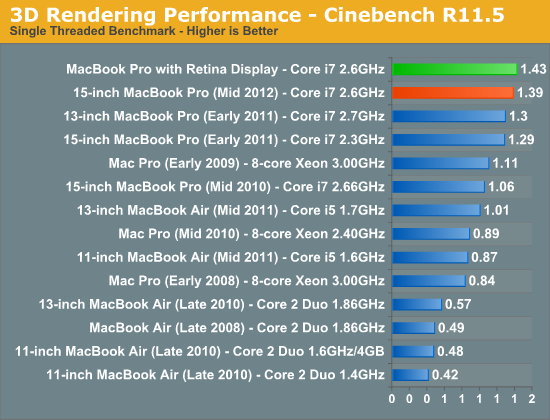

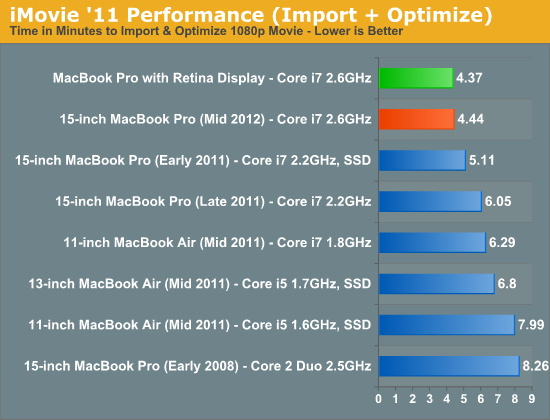

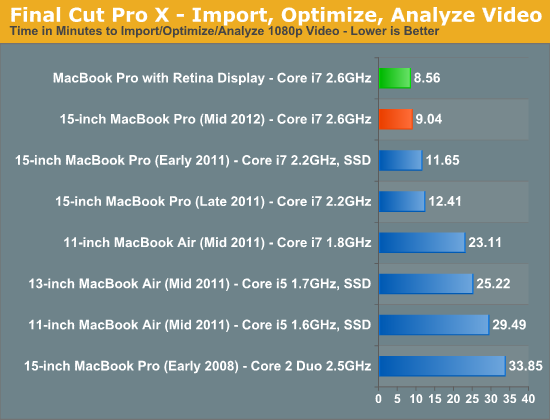
It appears that the i7's Turbo mode is less aggressive in the MBP versus the Retina, possibly due to the revised cooling system that the Retina model has. The 2012 MBP retains the same thermal design as the 2011 model, so it's unsurprising to see that Apple is being more cautious with it.
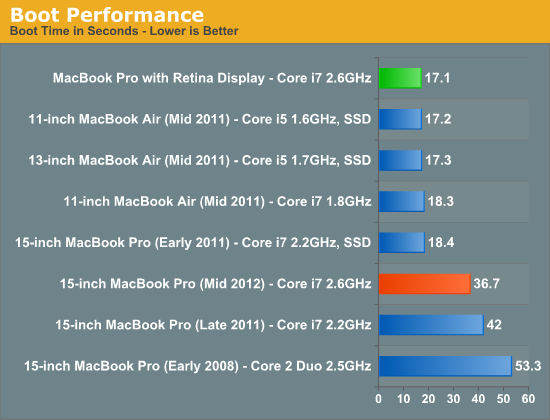
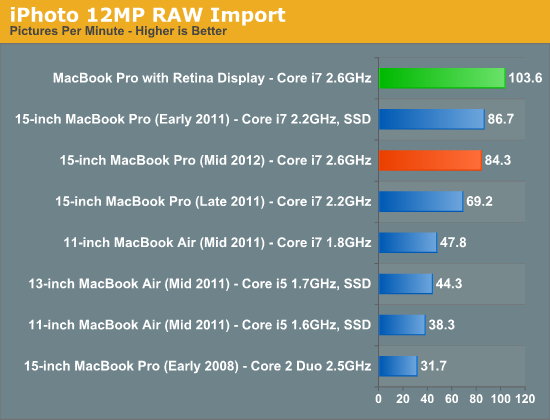
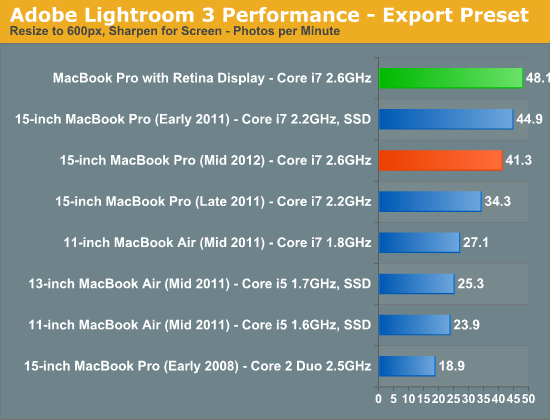

The SSD-based Retina obviously has faster boot times and performs significantly better in any disk-based activity. Based on my limited experiences with the Retina, it really feels substantially more responsive. Our usual recommendation from the last couple of years stands here too: if you're buying a new MacBook Pro, your first upgrade should be to add an SSD.
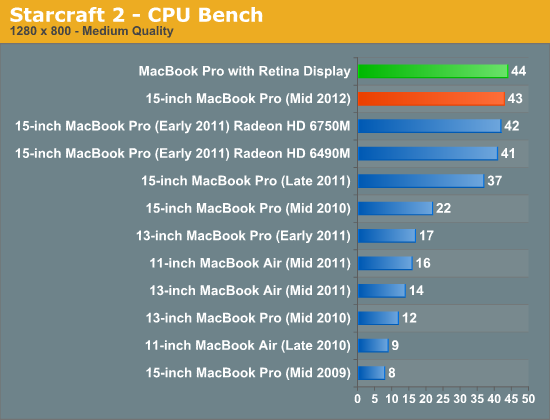
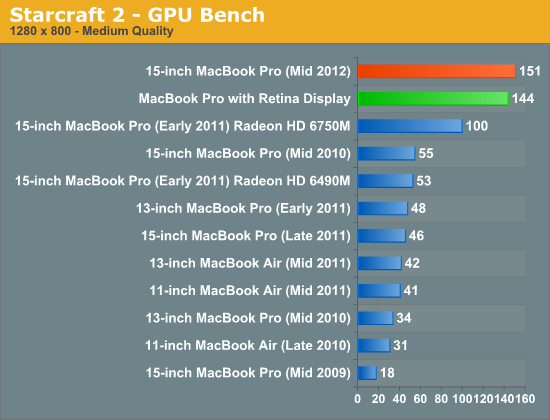
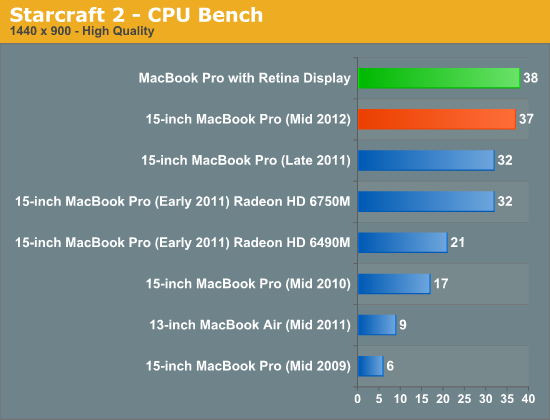
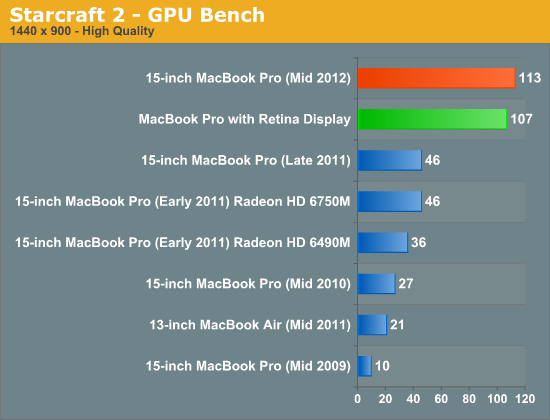
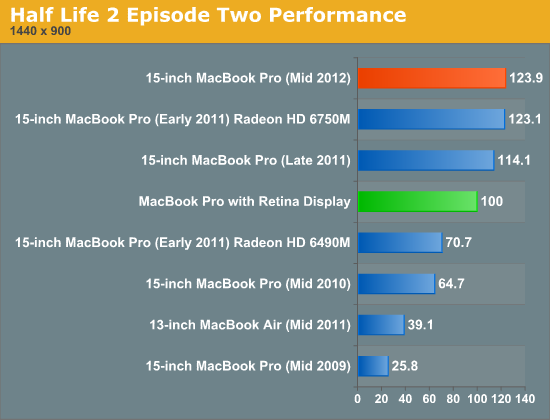
GPU performance is substantially improved over the 2011 MBP, with the GT 650M outpacing both the HD 6750 and 6770, to say nothing of the HD 6490 in the early 2011 Pro. We saw roughly equivalent performance with the rMBP again, with the MBP maintaining a slight edge over the Retina, but again with a margin of less than 5%.
We took a look at performance over time, and as expected, Ivy Bridge and Kepler do a really good job of minimizing heat buildup over time and the corresponding amount of throttling that occurs. Through 40 runs of our Half-Life 2 test (at native res with maxed out settings), I ended up with nearly identical numbers the entire way through, with a very slight downward trend emerging (the delta between the average of runs 2 through 10 was a bit under 1% better than the average of runs 32 through 40). It's pretty much a flat line all the way across, the new chips really let the MBP run at significantly lower temperatures. Using it versus a Core 2 or SNB MacBook Pro, it noticeably doesn't get anywhere near as hot to the touch in day to day use.
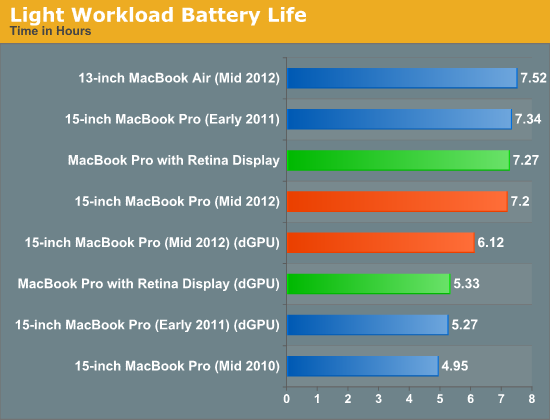
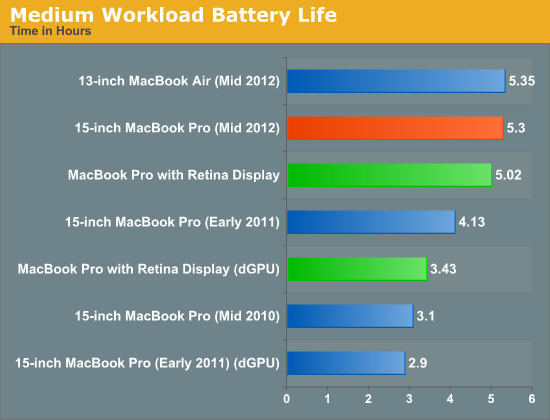
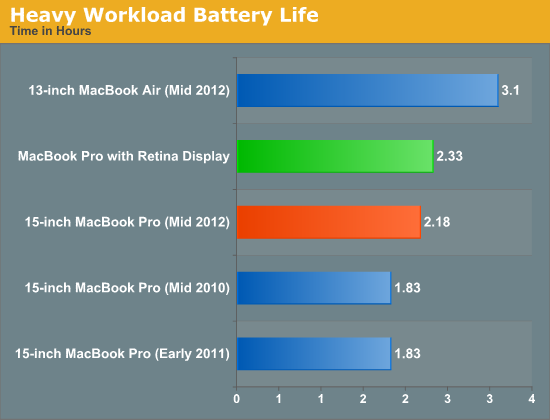
Battery life is pretty solid – we got a bit over 7 hours in our light web browsing test (with dynamic GPU switching on), a hair over 6 with dynamic GPU switching off (forcing the GPU to stay on), close to 5.5 hours in our medium-heavy browsing workload, and a bit over 2 hours in our brutal, heavy use case test (which adds a 1MB/s file transfer and a looping 1080p video to our heavy browsing test). Apple quotes 7 hours of “normal” use, and that’s about right based on my standard usage – if you use your notebook for light browsing and word processing with medium levels of brightness, you’ll get at least 7 hours if not a bit more. Obviously, once you start hitting the dGPU hard, it’ll die pretty quickly, but at least GPU efficiency has improved enough that just leaving the GPU on in light workloads doesn’t run down the battery too much.


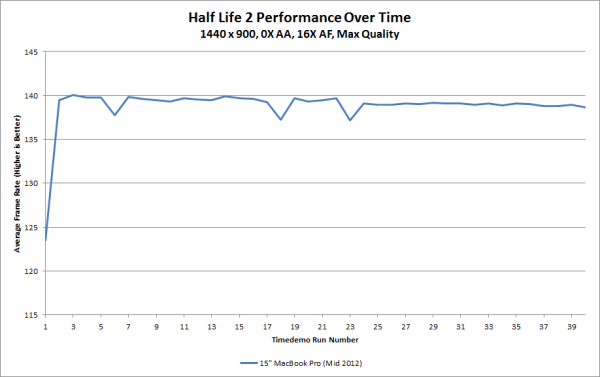








132 Comments
View All Comments
Sunburn74 - Thursday, July 19, 2012 - link
What? you have to buy something in order to be able to rightfully criticize it these days?stimudent - Friday, July 20, 2012 - link
Another overpriced Apple product.stimudent - Friday, July 20, 2012 - link
Anything that gives us an alternative to Windows is a good thing. Now if only we could get away from Intel chips.Hendrix248 - Saturday, July 21, 2012 - link
Never heard of Linux? Why would you want to move away from the best chips on the market?Belard - Wednesday, July 18, 2012 - link
As another has posted, its a standard design.... and it is a bit expensive. A ThinkPad T500 with the same specs that comes out of the same FOXCONN company sells for several hundred dollars less.okay, where is the full review on the Motorola Atrix HD?!
Belard - Wednesday, July 18, 2012 - link
By the way... a physical Ethernet port is still very handy for those times when you cannot get WIFI... there are some hotels/motels who are still wired. Or if you are at a location or family place where the WIFI fails or they lose the WiFi Password.Or you are at a clients place and need quick access and they don't want to give your wifi access.
inplainview - Thursday, July 19, 2012 - link
It has Ethernet over Thunderbolt....Hendrix248 - Saturday, July 21, 2012 - link
After you buy the adapter...Grok42 - Sunday, July 22, 2012 - link
Wi-Fi is great for quickly connecting to the Internet and other casual usage but I think apple has really underestimated the need for a wired connection, at least with current Wi-Fi tech. The problem with Wi-Fi is that it has a MUCH higher latency than a wired connection. This is important for voice, video or remotely viewing desktops. Wi-Fi is also very prone to dropping connections if for only a split second. You would never notice when browsing the web as the connection is stateless. However, if you use any networking services that won't survive a dropped connection it can be frustrating. These services include copying files, SSH, RDP, VNC, etc.Probably the biggest need for Ethernet is when dealing with large files. I can transfer a 15GB file from our servers in a few seconds with a gigabit Ethernet port. I have had it take hours to copy the same file over Wi-Fi. That is unless the signal drops at which point you will want to throw things when you have to start over again.
It seems that Apple or someone should be working on standardizing a slimmer version of the RJ-45 connector. Dongles go against everything Apple stands for on the design side.
sandro - Tuesday, July 24, 2012 - link
This is something I have been wondering since some time. What is in the way of standardizing a slimmer RJ-45 connector? Adapters would be so inexpensive that they could be included with the product. I wonder why Apple went this way instead of making a thunderbolt to ethernet dongle, which by construction costs quite some money and takes away one (to become) precious port.